#Black American History
Explore tagged Tumblr posts
Photo


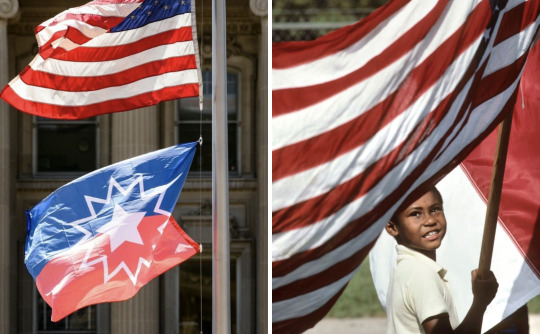



Juneteenth is a Black American holiday.
We call Juneteenth many things: Black Independence Day, Freedom Day, Emancipation Day, Jubilee Day. We celebrate and honor our ancestors.
December 31 is recognized as Watch Night or Freedom’s Eve in Black American churches because it marks the day our enslaved ancestors were awaiting news of their freedom going into 1863. On January 1, 1863, President Lincoln issued the Emancipation Proclamation. But all of the ancestors wouldn’t be freed until June 19, 1865 for those in Galveston, Texas and even January 23, 1866 for those in New Jersey (the last slave state). (It’s also worth noting that our people under the Choctaw and Chickasaw Nations wouldn’t be freed until April 28, 1866 and June 14, 1866 for those under the Cherokee Nation by way of the Treaties.)
Since 1866, Black Americans in Texas have been commemorating the emancipation of our people by way of reading the Emancipation Proclamation and coming together to have parades, free festivities, and later on pageants. Thereafter, it spread to select states as an annual day of commemoration of our people in our homeland.
Here’s a short silent video filmed during the 1925 Juneteenth celebration in Beaumont, Texas:
youtube
(It’s also worth noting that the Mascogos tribe in Coahuila, Mexico celebrate Juneteenth over there as well. Quick history lesson: A total of 305,326 Africans were shipped to the US to be enslaved alongside of American Indians who were already or would become enslaved as prisoners of war, as well as those who stayed behind refusing to leave and walk the Trail of Tears to Oklahoma. In the United States, you were either enslaved under the English territories, the Dutch, the French, the Spanish, or under the Nations of what would called the Five “Civilized” Native American Tribes: Cherokee, Creek (Muscogee), Chickasaw, Choctaw, and Seminoles. Mascogos descend from the Seminoles who escaped slavery during the Seminole Wars, or the Gullah Wars that lasted for more than 100 years if you will, and then settled at El Nacimiento in 1852.)
We largely wave our red, white and blue flags on Juneteenth. These are the only colors that represent Juneteenth. But sometimes you may see others wave our Black American Heritage flag (red, black, and gold).
Juneteenth is a day of respect. It has nothing to do with Africa, diversity, inclusion, immigration, your Pan-African flag, your cashapps, nor your commerce businesses. It is not a day of “what about” isms. It is not a day to tap into your inner colonizer and attempt to wipe out our existence. That is ethnocide and anti-Black American. If you can’t attend a Black American (centered) event that’s filled with education on the day, our music, our food and other centered activities because it’s not centered around yours…that is a you problem. Respect our day for what and whom it stands for in our homeland.
Juneteenth flag creator: “Boston Ben” Haith
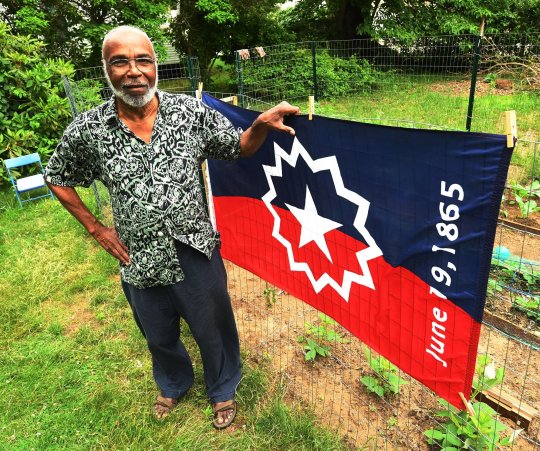
It was created in 1997. The red, white and blue colors represent the American flag. The five-point star represents the Lone State (Texas). The white burst around the star represents a nova, the beginning of a new star. The new beginning for Black Americans.
Black American Heritage Flag creators: Melvin Charles & Gleason T. Jackson

It was created in 1967, our Civil Rights era. The color black represents the ethnic pride for who we are. Red represents the blood shed for freedom, equality, justice and human dignity. Gold fig wreath represents intellect, prosperity, and peace. The sword represents the strength and authority exhibited by a Black culture that made many contributions to the world in mathematics, art, medicine, and physical science, heralding the contributions that Black Americans would make in these and other fields.

SN: While we’re talking about flags, I should note that Grace Wisher, a 13-year-old free Black girl from Baltimore helped stitched the Star Spangled flag, which would inspire the national anthem during her six years of service to Mary Pickersgill. I ain’t even gon hold you. I never looked too far into it, but she prob sewed that whole American flag her damn self. They love lying about history here until you start unearthing them old documents.
In conclusion, Juneteenth is a Black American holiday. Respect us and our ancestors.
#juneteenth#juneteenth flag#black american history#black american culture#ben haith#black american heritage flag#melvin charles#gleason t jackson#grace wisher#american flag#mascogos#juneteenth 2023
1K notes
·
View notes
Text

Florida has required public schools to teach African American history for 30 years. Yet, according to the Associated Press, many students receive lessons that are incomplete or inadequate.
In response to growing distrust in the state’s education system, community organizations, churches and cultural institutions are stepping in to fill the gaps.
In Delray Beach, Charlene Farrington leads Saturday morning classes at the Spady Cultural Heritage Museum to teach teenagers the history that schools often omit.“You need to know how it happened before so you can decide how you want it to happen again,” Farrington told her students.
Governor Ron DeSantis, a Republican, has spearheaded efforts to limit discussions of race, history and discrimination in classrooms. His administration has banned certain Advanced Placement African American Studies courses, citing alleged legal violations and historical inaccuracies.
Community-driven initiatives are gaining traction, with churches and advocacy groups taking the lead in educating students. Since launching its Black History toolkit last year, the nonprofit Faith in Florida has enlisted over 400 congregations to incorporate the resource into their programs.
Read more about this initiatives at ESSENCE.com.
#black history#blacklivesmatter#black lives matter#black people#racial injustice#black american history#black excellence#black pride#black liberation#black literature#black empowerment#black culture#africa
73 notes
·
View notes
Text
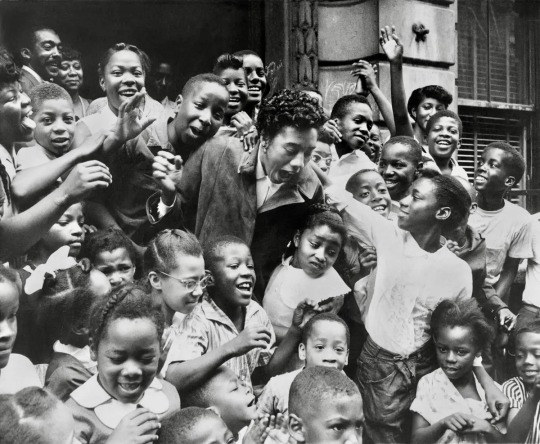
Neighbourhood children greet Ms. Gibson upon her return to Harlem after winning Wimbledon in 1957
#althea gibson#tennis#sports#history#american history#black american history#black history#currently reading carefree black girls by zebra blay and her picture was before the first essay#and you KNOW I love research
1K notes
·
View notes
Text
Before I forget, Happy Juneteenth. Saying it early cuz I know I'll forget tomorrow if I don't. Shout out to the Texas Fam (especially Galveston, Dallas-Fortworth, Beaumont, and Houston!)
#We are the ones we've been waiting for#Juneteenth#Black American History#Black American Holiday#Black Liberation#Diaspora Freedom
53 notes
·
View notes
Text
Foundational Black American
(FBA)
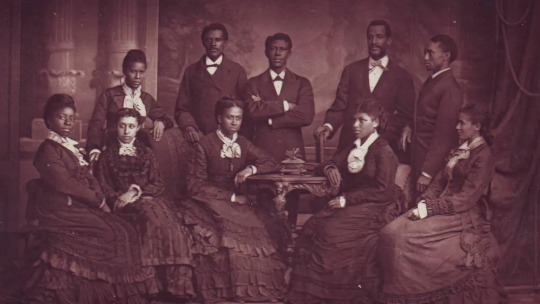
Foundational Black American (FBA) is not an organization, a movement, or group.
Foundational Black American is a LINEAGE.
What is a lineage? A lineal descent from an ancestor; ancestry or pedigree.
Who are we (Black Americans) direct, lineal descendants of?
“Foundational Black Americans are the descendants of the Black people who survived one the greatest atrocities in recorded history-American slavery.
FBA are the descendants of the Black people who built the United States from scratch.
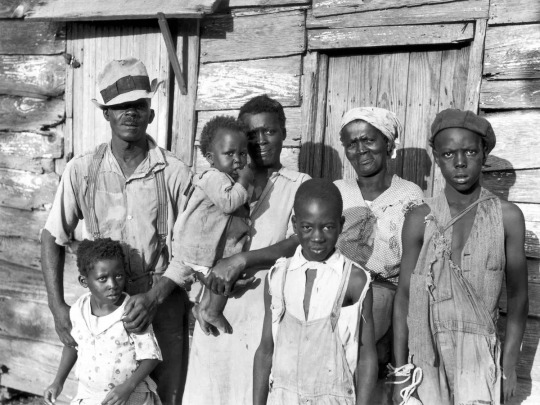
But this history did not start in 1619. The history of FBA started almost 100 years earlier.”
“The first documented foreign settlers in the New World of North America were the enslaved Black people who were brought over by Spanish colonizer Lucas Vázquez de Ayllón in 1526.
Shortly after Ayllón and the 600 other Spaniard's arrival to the area that would later become the South Carolina/Georgia coast, the enslaved Black captives launched a successful revolt, forcing the few
remaining Spanish enslavers to ultimately retreat from the area, back towards the Caribbean.
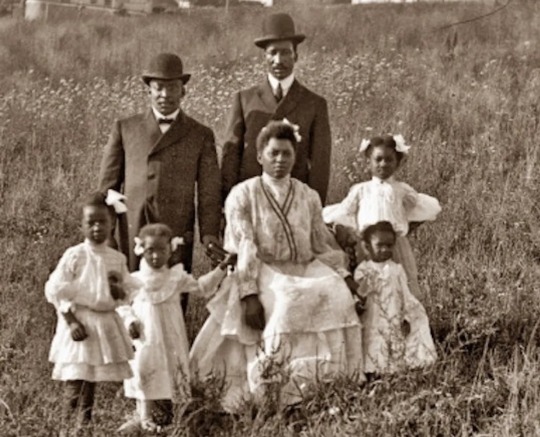
The liberated Black people amalgamated into the local Native American society, and this was a new historic chapter in what would ultimately become the culture of Foundational Black Americans.
Since 1526, the culture of Foundational Black Americans has been that of building, resisting, perseverance, and fighting for justice. FBA are exceptional people and we recognize, celebrate and give honor to that lineage.”
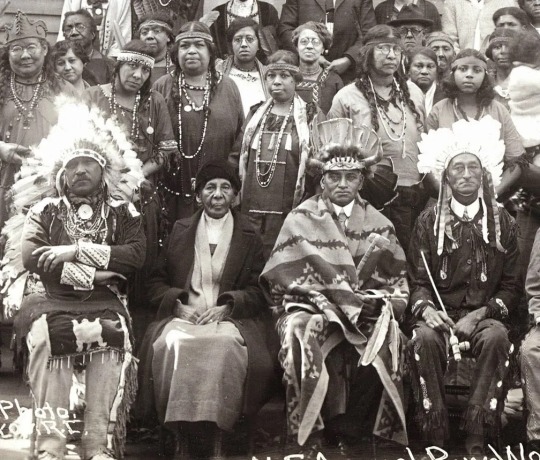
A Foundational Black American is any person classified as Black, who can trace their bloodline lineage back to the American system of slavery.
To be designated as a FBA, at least one parent must come from a non-immigrant background in The United States of America.
If a person's matrilineal and patrilineal lineage traces back to slavery in the Caribbean, then they are not considered a Foundational Black American.
#soulaan#soulaani#fba#black history#ancestry#america#indigenous ancestors#indigenous#american#foundational black american#black american history#black americans#black
41 notes
·
View notes
Text
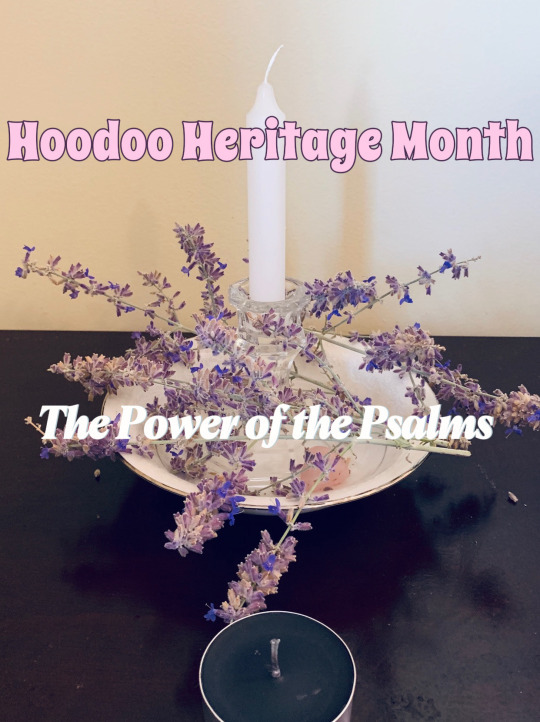
BIBLIOMANCY: THE PSALMS 📖🔮🕯️
During the many centuries of American history, Black African Americans had contact with various different religions and ethnic cultures ie; multiple Indigenous Tribes, Jews, Appalachians, Dutch, Swedes, Caribbeans, Haitian Kreyols and many more, through the Chattel Transatlantic Trade an land migration. These pivotal interactions are introduced the assimilation of many ritual practices. Hoodoo is a multiculturally mixed practice, with many nuances and intersections. It reflects the attitude and practices of many different generations, cultivated, passed down and preserved. While purists believe in keeping Hoodoo strictly traditional, the realist and preservationists, see Hoodoo as a constantly evolving and cunning art form, always adaptable to the times. Throughout the 1600 - 1900s, multiple different denominations of the Abrahamic faiths were wide spread through the United States influencing Black American folk magic and way of life.
Bibliomancy was already a common folk practice at and slowly making into the consciousness of Black American folk Magick.
The first book printed in North America to contain the psalms was The Bay Psalm Book, published in 1640 in Cambridge, Massachusetts by Minister an Planation Owner, Joseph Glover, who was well known for being the pioneer of printing in the English colonies and was one of the co-founders of Harvard University. Without sufficient historical evidence we can only speculate that this is the it’s one possible origins of the usage of the psalms in Black American Folk Magick. Glover was a Rector aka a parish priest for the Church of England and was decently educated. It is highly likely during his studies in England he had access to Jewish Psalm Prayer Books which inspired him to publish one of his own, when he came to America. There were also a small afro-jewish populations and various intersectional social connections with the black community, with the Jewish, Catholic and other various Christian religious denominations that were also clear influences.
The Church was a place of indoctrination but also social relief, community and emotional escapism for Black Americans during these times. Throughout the centuries the Indoctrination of the Church became the only source of solace and safety for Black American mental health & society during ever shifty and dangerous social climates. Deeply imbedding itself into consciousness of the black community, subconsciously and consciously, which we can still see in modern times.
As the ability to read and write increased within the black community, in addition to the growth of printing more books access to reading the Bible and the Psalms became easier and easier. Now the Psalms were seen as a powerful book of spells in African American folk magick, with a multitude of different uses. Psalms could be scratched in the mud, written on doorways, or just simply spoken or prayed over folks, tools, plant allies, talismans, mojo bags, roots, other items, water, candles and more. The intent could be love, justice, abundance, peace and even hexing. Eventually, this belief trickled down to usage of other verses, from other Bible, an influenced African American communities, all over the country. Each community like their own little tribes, some with similar or different practices and rituals, regionally.
In practice, The power of the psalms was unmatched, people swore by it by its success rate and still do to this day, which is why the practice has stuck in modern times.
The Psalms were a vehicle of rejuvenation and life, these scriptures were considered living words of power. I’ll go into the sacred mythos behind that, for members of my Patreon, later on this month.
For some Black Americans it’s easy to overlook and even discard the power of bibliomancy especially when they have deep religious trauma when it comes to any Abrahamic faith (Baptist, Catholic, Christian, Cogic etc) which is understandable. These feelings are valid & practicing Hoodoo, means understanding the many intricate nuances of the intersection and history of this folk culture. Others also see the value in Bibliomancy and continue this ancestral practice in modern times, knowing two things can be true at once. There is a great deal of duality in Hoodoo, which is something many of us have come to accept and honor at the same time. Respecting this balance demands a deep sense of self and cultural respect, a discerning eye and great deal of empathy, whether practitioners like it or not.
Using the Psalms is a powerfully easy way to reconnect and heal with ancestral Black American practices and medicine. It’s not a requirement of course, but it’s fun to encourage other black Americans to practice and discover all of its hidden powers. Many African folk practices, were hidden out of survival, requiring a level of covert cunning. Bibliomancy was a clever way hide in plain sight without attracting too much attention. Think of our ancestors as secret agents of truth, justice with a covert strategic mentality that still has important place in modern times. Some magick requires a keen mind, good sense, without calling any attention to itself, teaching us the practice of self control and discipline. This is why the practice of bibliomancy is important, allowing you to tap into this energy and honor your ancestors and yourself.


Examples of Bibliomancy
Psalms 54 - Help In Times Of Need. Mastering Negative Thoughts, Revenge Against Enemies.
Psalms 60 - Put The Past Behind You.
Psalms 41 - Help With Money Troubles
Psalms 23 - Protection, Abundance, Stability & Healing
HAPPY HOODOO HERITAGE MONTH ✨
🕯️🕯️🕯️
#hoodoo#salem#black community#black culture#black history#hoodoo community#psalms#bibliomancy#witches of color#black spirituality#spirituality#witch community#witchcraft#african american history#folk magick#occult#jewitch#rootworker#witchesofcolor#black americans#black witches#pagans of tumblr#witchblr#conjure#black american history#black american culture#black femininity#pagan community#witch history#hoodoo heritage month
36 notes
·
View notes
Text

This movie was amazing! Full of pride. Full of grace. Full of beauty. Just so much fullness. Fullness until your cup runneth over with so much emotion. I felt so full as soon as it ended.
Kerry Washington portrayed Lieutenant Colonel Charity Adams so beautifully! Milauna Jackson’s portrayal of Captain Abbie Noel Campbell was equally beautiful too! They both did such incredible, honorable portrayals of these women! Stellar performances—outstanding acting from these ladies!!! Y’all, Kerry was fantastic! Phenomenal acting!
Their friendship and relationship as peers and co-workers and fellow commanding officers…the strength in that dynamic was so powerful. It’s fierce and a force. Again, that Black woman sisterhood is so vital! Telling Corporal Lena Derriecott King’s story through it is impactful. So glad she was able to see it and have her story told before her passing.
They willingly wanted to serve our country to help liberate another. While facing domestic racism & mistreatment, the same abroad and within the ranks. Despite it, they accomplished what they were sent out on mission to do even with all the odds placed and stacked against them. That is power!
Overwhelmingly a great, historical film about all these beautiful, brave, heroic Black American women! I pray all their descendants are proud of them and their rich legacy.




#the six triple eight#6888#The 6888th Batallion#lieutenant charity adams#colonel charity adams#charity adams#captain abbie campbell#corporal lena king#kerry washington#milauna jackson#ebony obsidian#tyler perry#american history#Black American history#Lt col charity adams#wwii#ww2#6888th battalion
20 notes
·
View notes
Text

#strange fruit#america was never great#black history#african american history#black american history#black american#black americans#black people#jim crow#jim crow era#1930s#the dark side of america#america's dark history
11 notes
·
View notes
Text
Bayard Rustin
Back when I was working as an archivist at the American Jewish Historical Society at the Center for Jewish History in Manhattan, one of the most interesting figures I had the pleasure of learning about was proudly and publicly gay Civil Rights activist, advisor to Dr. Martin Luther King, and firm believer in the importance of Black and Jewish American communal solidarity: Bayard Rustin.

Bayard Rustin standing on a stage and speaking to a crowd from a podium at the 1967 NAACP Conference in Albany, New York. Image courtesy of the NMAAHC.
Check out the small, but fascinating collection here! The Schomburg Center for Research in Black Culture highly recommends this study of Mr. Rustin, and the NMAAHC has a fantastic bio here, with a link to further collections materials. I also highly recommend taking a look at some of the photos and related collections held by the Library of Congress.
As some of you may know, a well-received biopic of this fascinating figure was recently released. And incidentally, my dear friend and DC-based actor, Emily Gilson, had a small, but impactful role in the film as "Little Rock White Girl."
Check it out! Or at least, check out some of these fantastic collections.
104 notes
·
View notes
Text

The Social Security Act, signed on this day in 1935, provided retirement and unemployment benefits to Americans, but it didn’t include farm and domestic workers, who were disproportionately Black. This kept nearly two-thirds of Black workers out of the program.
Learn more in our current special exhibition: BLACK AMERICANS, CIVIL RIGHTS, AND THE ROOSEVELTS: https://fdrlibrary.org/civil-rights-special-exhibit
Photo: Domestic workers march to demand inclusion in the Social Security program and New Deal legislation establishing a national minimum wage. (c) Joe Schwartz Photo Archive
141 notes
·
View notes
Text









badass women of history ↝ angela davis, black american activist
i am no longer accepting the things i cannot change. i am changing the things i cannot accept.
#angela davis#historyedit#historicaledit#history edit#historical edit#history#historical#women in history#black american history#black history#badass women of history#bwoh#historyedit*#historicaledit*#moodboard#moodboard*#mine
31 notes
·
View notes
Text

"Mother" Lessie Benningfield Randle
One of the two last living survivors of the 1921 Tulsa Race Massacre, celebrated her 110th bornday on Nov. 10, 2024. ❤️
Beloved elders, Lessie and Viola Fletcher (also 110), are still fighting for reparations for government-sanctioned domestic terrorism. God willing someone will peep the play and let go of their time-wasting attorney who filed their case for this massacre under that ridiculous "public nuisance" framework. Twice. Dismissed by the Oklahoma Supreme Court and a lower court because it's the wrong claim. No shocker there. A public nuisance framework is not reparations and it's disrespectful to the history, victims, and survivors.
God willing they will get everything that's owed and more with a competent attorney who files the correct paperwork while they're still here with us.
67 notes
·
View notes
Text
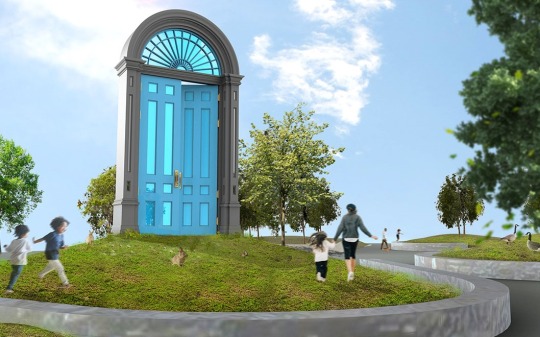
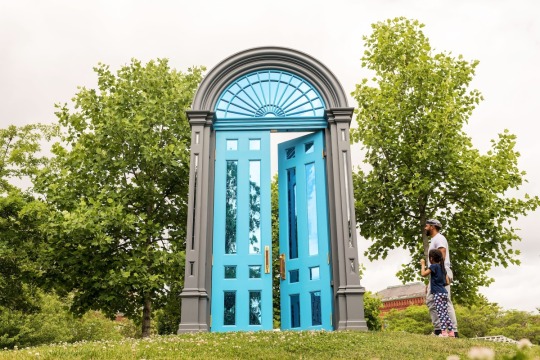
Mark Reigelman, “Threshold” (2023)
“Threshold” by sculptor Mark Reigelman will be a public artwork celebrating the principles of equality and community-building that have been integral to the history of New Bedford. Inspired by the Religious Society of Friends (Quakers) who inhabited the city in the late 17th century as well as the aesthetic of New England’s archetypal colonial doorways, Mark Reigelman beckons viewers toward Threshold’s partially opened door, shining down on Custom House Square from its 17-foot-tall perch.
Threshold will draw on the unique architecture of the federal doorway of the oldest building in New Bedford’s Abolition Row Historic District, constructed mainly from wood and steel, an important site in the early Black freedom struggle. Its double-sided door references the community’s diverse history, with its blue façade facing the Wharf and rising sun as a nod to the city’s fishing roots. At the same time, its massive arched window is tiled with colorful mirrored pieces, capturing the various identities and cultures that have made up the city.
#art#design#doorway#architecture#heavensdoorways#doors#doorsdesign#doordesign#entrance door#new bedford#quakers#new england#mark reigelman#black freedom#black lives matter#american history#black american history
62 notes
·
View notes
Text

Happy Juneteenth! On this date in 1865, the formerly enslaved people in Texas learned of the Emancipation Proclamation which officially ended slavery in the USA. Juneteenth is a celebration of Black American culture and history. If you mark this occasion, I hope you and yours have a joyful Juneteenth.
Black American culture has a rich tradition of herbal medicine and agricultural knowledge. I encourage you to read this fascinating article "Roots of African American Herbalism" in this blog post from the @herbalacademy . Please copy and paste it into your browser window to read it.
#juneteenth #blackhistory #herbalmedicine #americanculture
#juneteenth#happy juneteenth#black american history#black americans#herbal medicine#american culture
8 notes
·
View notes
Text
38 notes
·
View notes
Text

Black Americans Dancing at Labor Temple Hall, Bon Temps Carnival Ball, New Orleans, Louisiana, 1953.
Ralston Crawford Collection, Hogan Jazz Archive, Tulane University Special Collections.
#black history#dance#soulaan#soulaani#america#ancestry#1950s#Labor Temple Hall#black american history#black americans#foundational black american#fba
15 notes
·
View notes